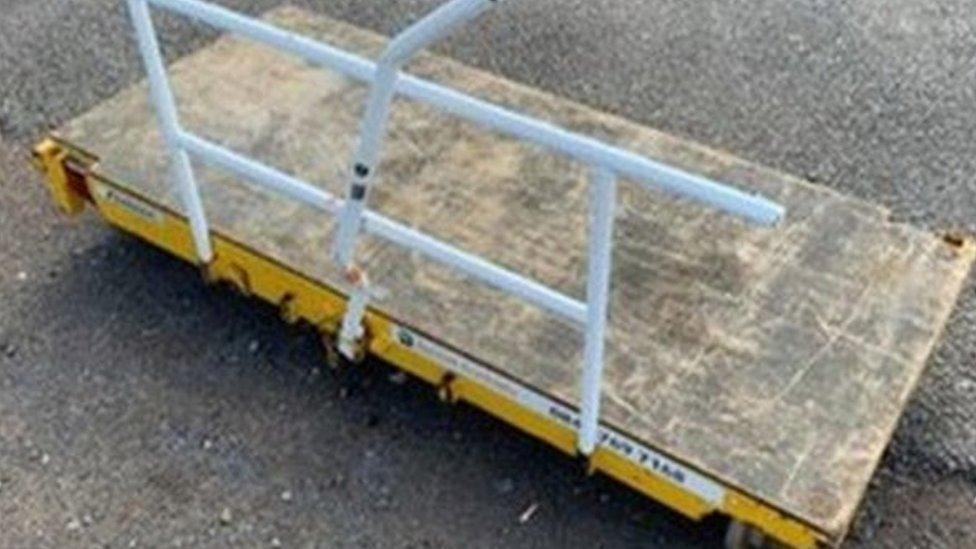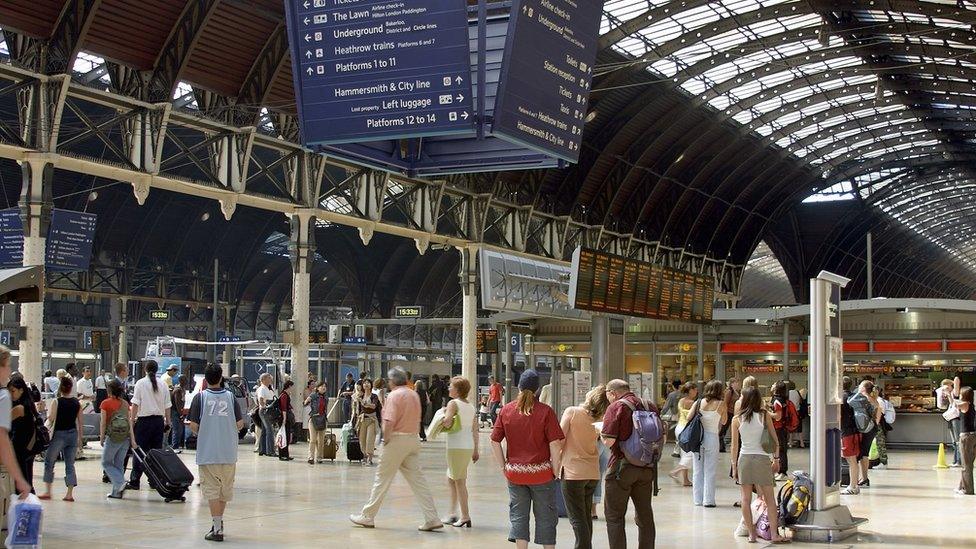GWR train driven too fast after 123mph Oxfordshire trolley crash
- Published

The trolley's handle was jammed underneath the train after it came to a stop
A train that smashed into an abandoned work trolley at 123mph should not have travelled so fast to a station afterwards, investigators have said.
The Great Western Railway (GWR) train dragged it for a mile (1.6km) near Challow, Oxfordshire, in October 2021.
No passengers were injured. The train was damaged but did not derail.
However, investigators said it was later driven at 85mph when it should not have been driven faster than 40mph given its damage.
The London Paddington to Swansea service stopped after it hit the trolley used by workers at 06:09 BST on 21 October.
Network Rail and Hitachi Rail engineers inspected the train and it departed for Swindon, where it terminated, at 08:53. From there, it went empty to the North Pole depot in London.

The trolley (similar to the one pictured) was dragged for 1.5 miles (2.4km)
The Rail Accident Investigation Branch (RAIB) recommended red lights should be fixed to trolleys on both sides so they can be seen.
It found Network Rail workers failed to correctly follow processes to allow trains to run after overnight work.
It said workers should follow clearer processes and potentially use technology to ensure lines are cleared.
The trolley's handle became lodged underneath the train, causing damage to the underframe, while the track suffered minor damage. The trolley was destroyed.
A Network Rail spokesperson said: "We can never afford to be complacent when it comes to the safety of our passengers, colleagues and the general public and thankfully, no one was injured, but this incident should never have happened.
"We are sorry to all passengers and colleagues who were impacted by this incident."
Chief Inspector of Rail Accidents Andrew Hall said: "Systems and processes designed to detect any equipment left on the track before lines reopen after maintenance work should not be reliant solely on human performance in the middle of a dark night.
"There are technological solutions which can assist with addressing this issue and this accident is an example of an opportunity missed."

Follow BBC South on Facebook, external, Twitter, external, or Instagram, external. Send your story ideas to south.newsonline@bbc.co.uk, external.
- Published19 November 2021
